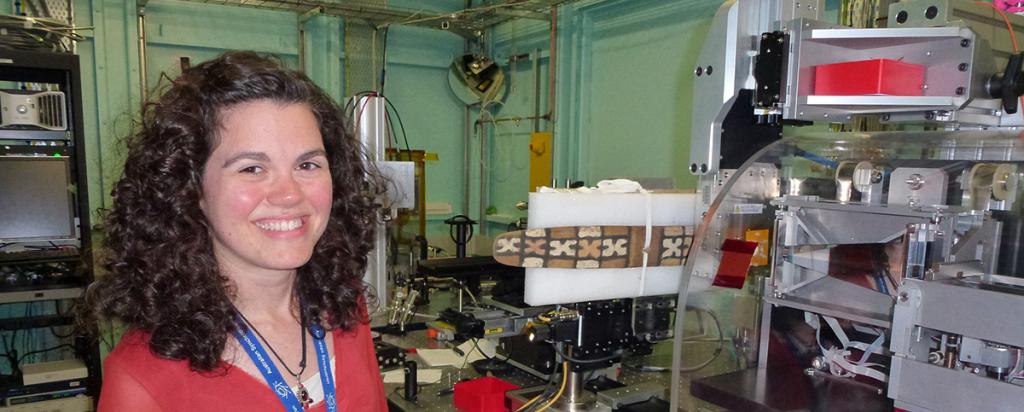
Dr Rachel Popelka-Filcoff, an Australian Institute of Nuclear Science and Engineering (AINSE) Senior Research Fellow; image courtesy of Flinders University
The first non-destructive analysis of Australian Aboriginal ochre artefacts using advanced X-ray technology has paved the way for more accurate cultural mapping and new insights into the origin and style of Indigenous artworks.
While European-style artworks have been analysed using X-Ray Fluorescence Microscopy (XFM)techniques, the new research kickstarts ‘hands off’ high-tech analysis of Aboriginal Australian art, beginning with a boomerang and a bark painting from the South Australian Museum's Australian Aboriginal Culture Collection.
Lead researcher Dr Rachel Popelka-Filcofffrom Flinders University says the sensitive analysis of ochre-decorated objects using the XFM beamline at the Australian Synchrotron will help researchers better understand the cultural uses and techniques of Indigenous art and artefacts.
‘Relatively little is understood about the procurement, composition, and mixing of the natural mineral pigments that have been used in Aboriginal Australian objects.
‘This new method provides higher resolution information and an alternative to traditional destructive testing, while returning the object unharmed to the museum collection.’
In Indigenous communities, from human habitation of Australia to contemporary communities, ochres of many colours are used with wood and bark for cultural expression and exchange of ideas and knowledge.
Dr Popelka-Filcoff, an Australian Institute of Nuclear Science and Engineering (AINSE) Senior Research Fellow who has previously analysed more than 150 different kinds of ochre used around Australia, says high-resolution maps of pigment application generated at the Australian Synchrotron investigate the layering and application of ochre minerals without physically removing samples from the object.
‘Investigating the fine lines and dots in many Aboriginal objects, this technique has unparalleled resolution over other existing techniques, allowing further insights into the composition, application and layering of natural pigment on the micron scale.
‘The findings from across Australia will help to reconstruct ancient exchange routes, build on the existing provenance of Aboriginal art and objects, and help conservation and authentication studies.’
Dr David Paterson, Principal Scientist on the X-ray fluorescence microprobe at the Australian Synchrotron says the use of a highly sensitive and very efficient X-ray detector allows the radiation dose, particularly on these very old objects, to be as low as possible.
‘By using the powerful X-ray fluorescence microprobe for this research experts could gain more accurate data on the composition of the mineral pigments, much faster than other traditional X-ray methods, without damaging the ochre.’
The findings, also involving researchers from the University of South Australia, were published in Royal Society of Chemistry's Analyst journal and latest Emerging Investigators issue.
Media coverage:
- ‘Advanced x-ray analysis paints Indigenous artefacts in a new light’ on ABC radio’s ‘AM’, Friday 1 April 2016
- ‘Aboriginal ochre fingerprinting helping researchers trace ancient Indigenous trade routes’ on ABC news online, Thursday 31 March 2016